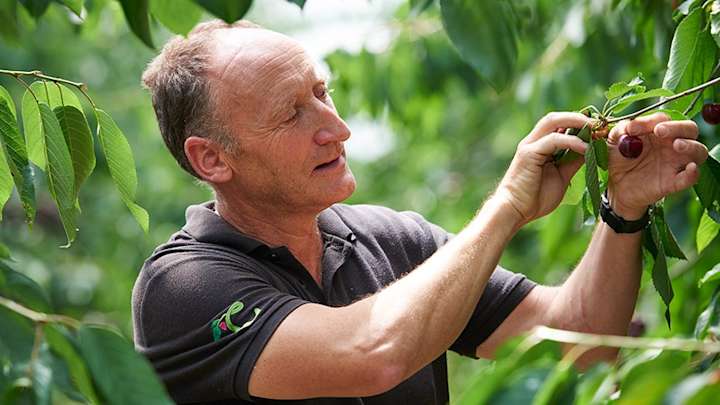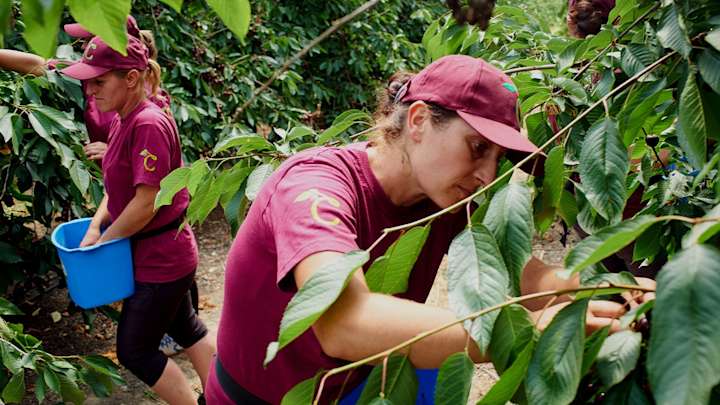
Recipe
Cherry galette
This French classic full of British fruit is great with yogurt and even better with ice cream.
‘The British cherry industry goes back a long way,’ says Tim Chambers, who grows British berries and cherries for Co-op. The story goes that, when Henry visited France, he fell in love with the cherries he found there, so his fruiterer brought trees to plant in Kent. And the same variety is still grown here today.
“The farm’s cherries are harvested by hand during July and August, from 50 acres of trees”
‘Cherries taste much better when they’re grown close to where you eat them,’ he continues, popping one in his mouth, ‘in terms of freshness, flavour and texture. Plus, buying these berries supports British agriculture, which is important for the whole country.’
We’re standing in his beautiful cherry orchard on Boyton Court Farm in Maidstone, Kent, surrounded by trees weighed down by plump, shiny cherries. Tim can’t resist nibbling on them throughout the day as we chat.
His family have been growing cherries since his grandfather set up the farm in 1952. ‘He was from a long line of farmers, and we’ve carried on his business,’ Tim explains. ‘We traditionally grew everything that a small Kent farm would grow, from cauliflowers to plums, but now we specialise in cherries and berries. As a boy, I grew up harvesting them.’


Although it’s hard to imagine a summer without punnets of cherries brightening your table or picnic blanket, growing these tiny fruits is surprisingly tricky.
‘I call it casino farming, because they’re so risky to grow,’ Tim says. ‘It’s all down to the weather — if it’s too hot, windy, wet or dry, it can affect our crop, and it’s the one thing we can’t control. Our orchards are south-facing, so they get as much sun as possible. It makes our fruit lovely and sweet.
‘We judge when the cherries are almost ready to be harvested by checking their flavour, waiting for the moment they develop the right balance between acidity and sweetness. The colour confirms that they’re ready.
Different varieties change in different ways. Penny, for instance, tends to be lighter red in colour, depending on when it’s harvested, whereas Kordia — another variety we grow here for Co-op — is nearly black when it’s ready to be picked. It becomes so shiny, you can almost see your face in it and the flavour is exceptional.’
The farm’s cherries are hand-picked in July and August, from 50 acres of trees — some of which Tim planted himself. ‘I planted this orchard seven years ago. I’m very proud of it.’
Today, the sun is shining, and Tim’s cherries look so tasty, they’re impossible to resist. Luckily, he’s happy to let us join him in munching through his orchards under the warm sun.
‘This weather is the reason I’m a cherry farmer,’ Tim says, smiling up at the cloudless sky. ‘I get to come outside on days like this, and I never think, “Ugh, Monday again.” I always turn up with a smile. And I get to eat cherries all day.’ Tim enjoys the fruits of his labour on days off too. ‘I like them all year round,’ he says. ‘Fresh in the summer and cherry pies in winter.
‘From the beginning of the berry season in May, you start with strawberries move onto raspberries, and then to cherries —if you buy them in that order over summer, you’ll get them at their very best.’